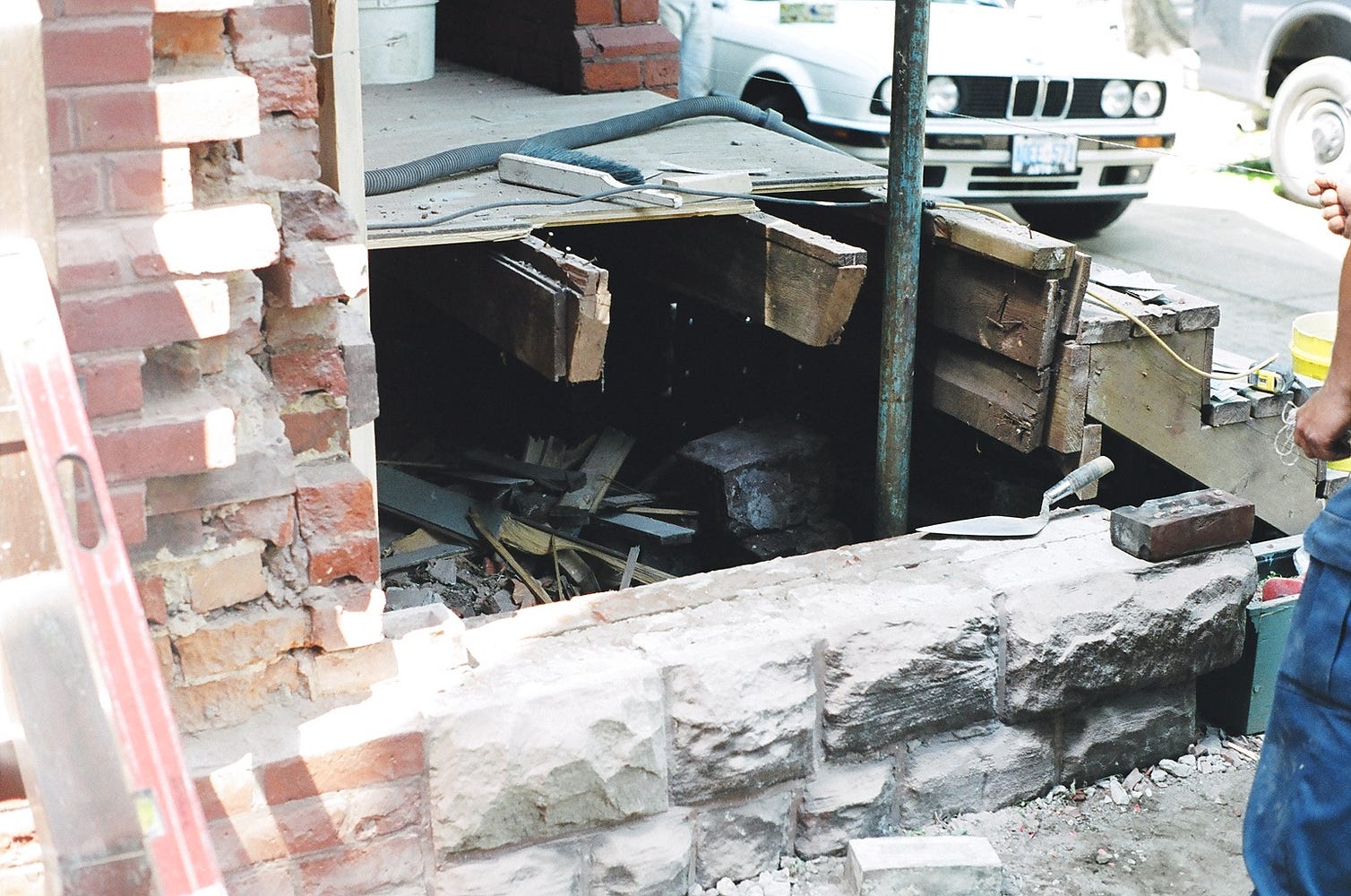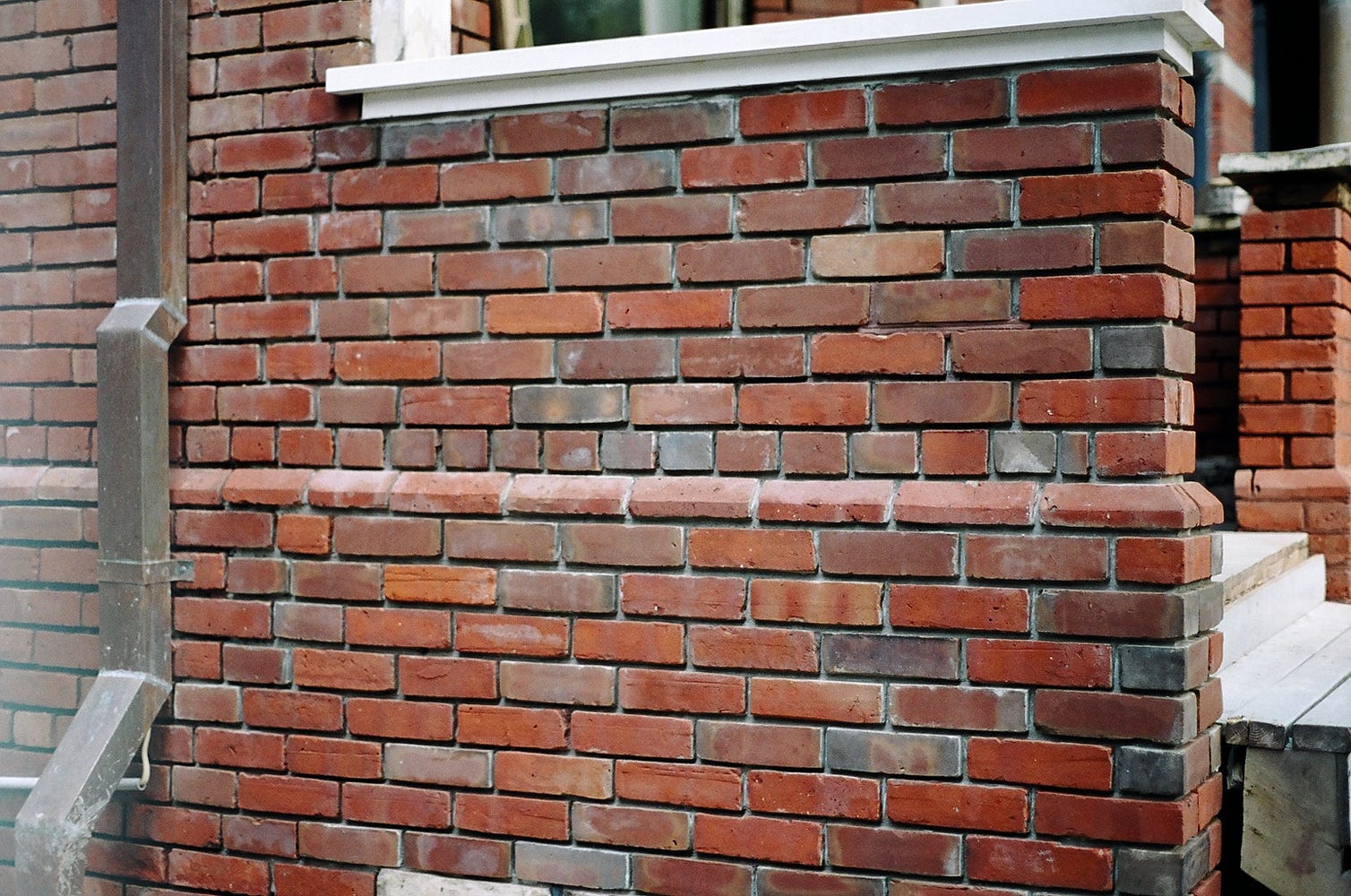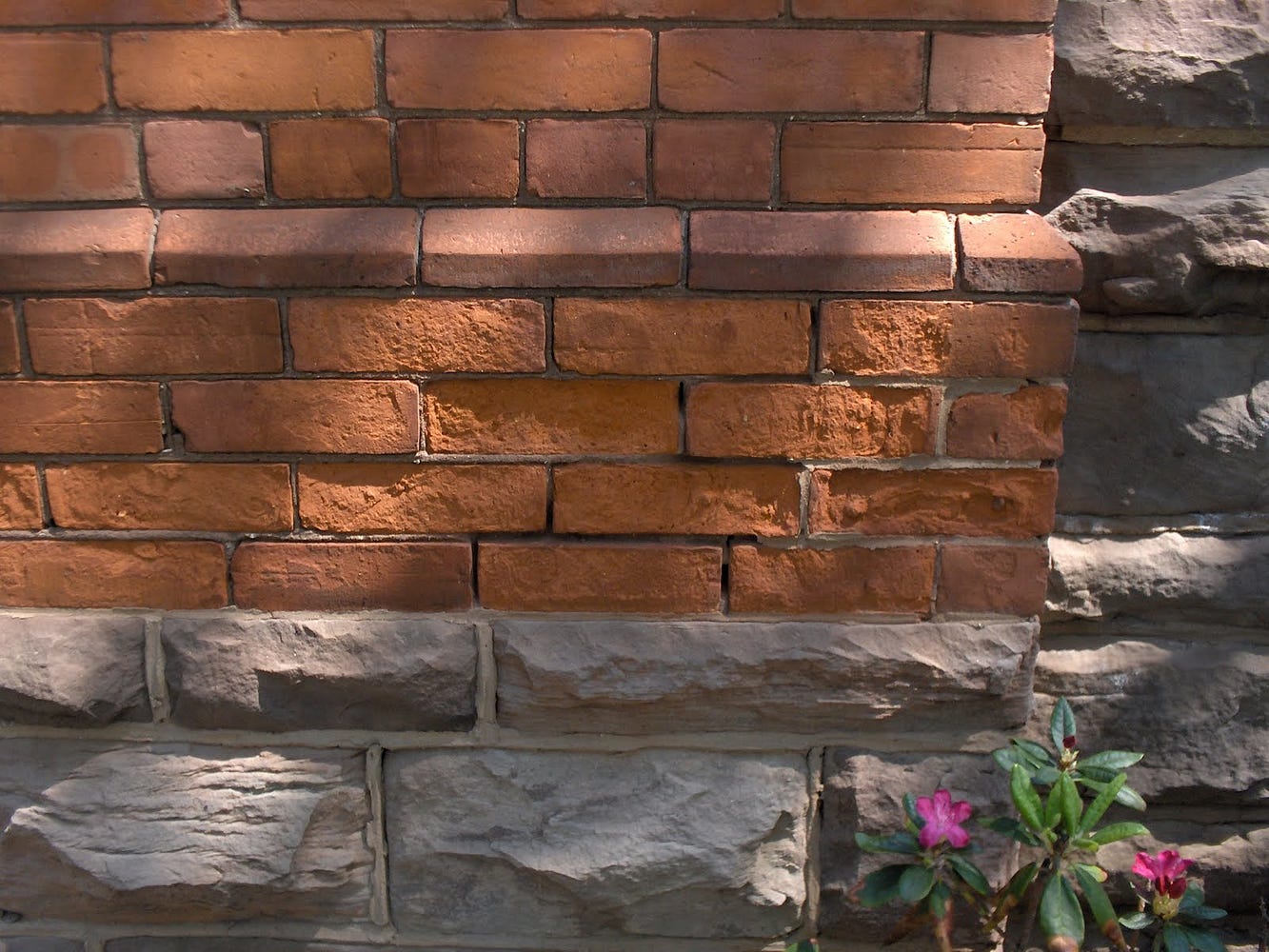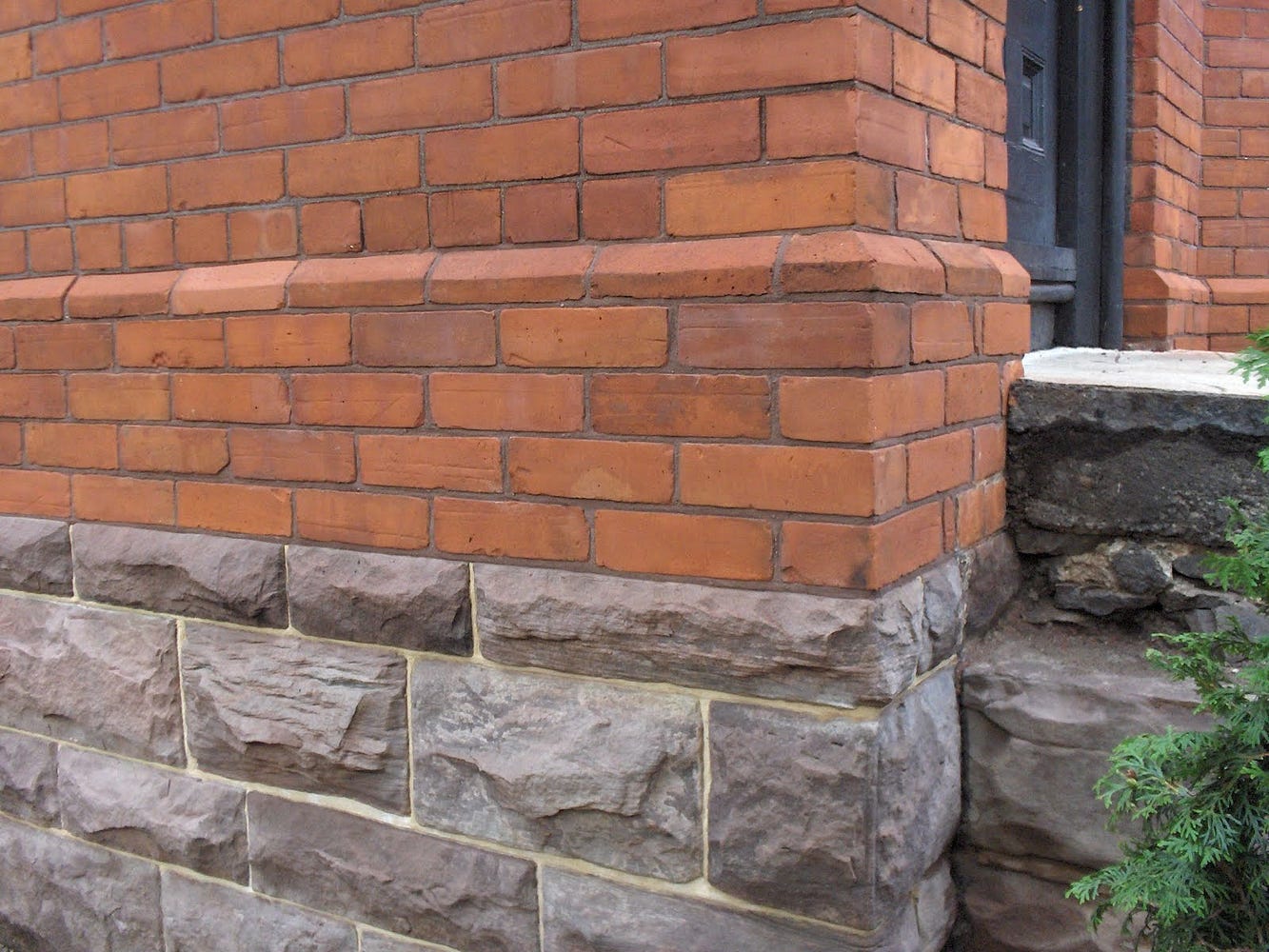My original intention when starting Invisible Tuckpointing Ltd., in Toronto, was to specialize in repointing, namely the replacement of the joints one can see between masonry units.
Or the bricks can be “refurbished” using a proprietary material. This topic will be the subject of a subsequent blog post.
- Bricks are no longer being manufactured like they used to, therefore the amount of effort / research that would be required to locate an artisan with a kiln, the skills required and the right type of clay in order to produce a close-enough match is too great to be realistic.
- Even imported units (“bricks from England” is something I frequently hear these days in Toronto), if they are modern bricks aimed at imitating old ones, will still tend to look incongruent and out of place, in my opinion. It should still look like an old house when you are done, not a new one.
My personal conclusions on the topic are that, if one is to endeavor to replace existing bricks, then the required effort should be expended in order to procure matching salvaged units which will work well for the particular building they are intended to be used on.
I personally am always on the lookout for buildings which are scheduled to be demolished in Toronto, and make contact with the individuals involved so as to be able to procure (read “purchase”) good salvaged bricks, and even stones.
The trick is to be able to hand-pick the good ones, as many will be broken in the demolition process.
Sometimes, a building is demolished slowly, in other words, carefully, and that will yield a much better “good-to-bad-bricks” ratio.
It will rarely work out that a building is being demolished exactly when its bricks will be needed by a mason for a particular project, and so once acquired, the salvaged pieces will need to be warehoused, which can become a monthly expense for the mason.
Here is a portion of my inventory. I sort the bricks by type over many piles; some of the categories being red, orange, yellows, 1850’s, 1870’s, 1890’s, turn of the century, “A”, “B” and “C” grades, etc..

The next two pictures are of a particular house I couldn’t initially find any bricks for. This was in November of a given year, getting ready to perform the project the following spring.
I had an artisan in the United States make me some custom brick samples, and had them sent over to Toronto. Twice. No joy.
Eventually, I had the good luck of telling a former customer of my quest, and it turned out that his mother had a pile of likely matching bricks she had carefully preserved during a prior renovation project.
He gave me the address and I went to see her. They were very good, but she wouldn’t sell them to me (at first).
I finally offered her a substantial amount for the coveted pile and she finally said, “if you want them so bad, you can have them”.


This time again I couldn’t find a replacement brick I was happy for this prominent section of the house you see in the pictures below.
But instead, I pulled bricks from a small rear addition which the owner intended to take down a few years later.

Shown below, we’ve removed the bricks (and the mortar of the foundation as well). [As a side note, the mortar above the missing bricks has not been removed. In the next post, you will see how we were able to match it.]

You can see here, by matching the mortar as well as the bricks very accurately, how harmonious the overall result becomes.





This is the rear addition that the bricks were obtained from. I still used only vintage bricks to put it back together, even though the orange ones were not quite as nice as the originals.


This main point I want to make here, is that it is hard to find salvaged, matching bricks for heritage masonry. But making the effort to do so is better than the alternative, if you want the most aesthetically pleasing result, in my view.
Your priorities, when evaluated against the available resources in your area, will dictate how far you take it, of course.
Contact me: Toronto residents: www.invisibletuckpointing.com

No comments:
Post a Comment
Note: Only a member of this blog may post a comment.